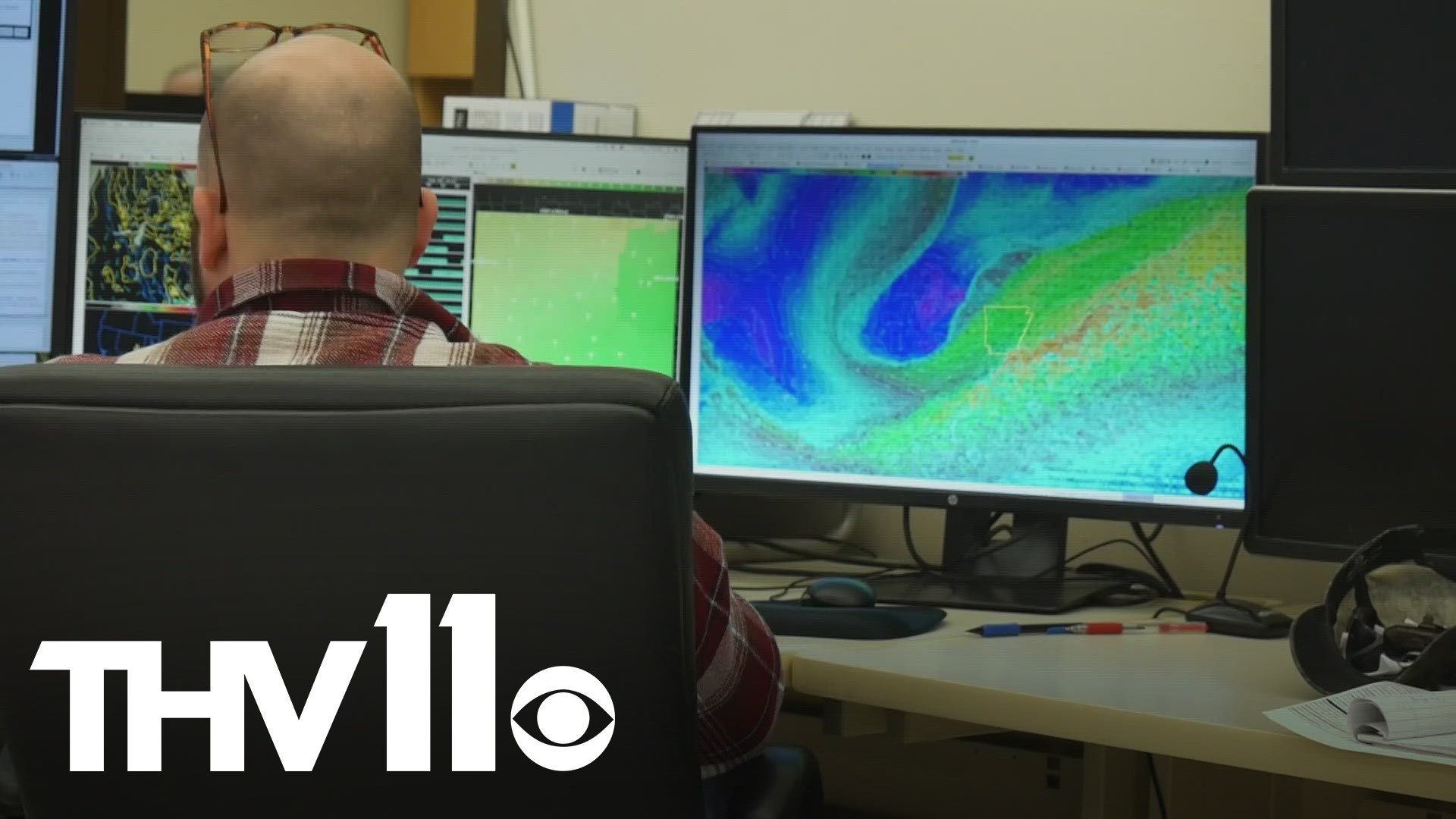LITTLE ROCK, Ark. — Arkansas is no stranger to severe weather and most people who live here know that it's typically a year-round threat.
However, the spring months offer the most frequent action, and last spring was one that many Arkansans won't soon forget.
"We moved in July of [20]22. So we were here for nine months before it happened," said Jennifer Bishop, a Little Rock resident.
On the afternoon of March 31, 2023, a powerful high-end EF-3 tornado tore through our community and destroyed many homes— including the Bishop family's home.
"We thought this was going to be our forever home," Bishop said.
Luckily, no one was home at the time, but the family knew to take shelter where they were, thanks to information that was available in the palm of her hand.
"I have always kind of followed the weather. And I would always have my notifications set on my phones, not just for the counties that I'm in and that kids are in, but for the counties that lead up to it. So when it happened, that Hot Springs was getting hit. Or it was heating up in Hot Springs, I was able to start watching the live feeds," she explained.
Staying connected when it matters most. In today's world, there are more ways to do that than ever before.
While better technology makes it easier to stay informed, Dennis Cavanaugh with the National Weather Service in Little Rock said that it has also improved the way we track storms.
"Up until the mid-1990s we were using radar technology that actually originated from 1957. It didn't have the Doppler capability. So we couldn't actually see rotation, we couldn't see if the rain was moving toward or away from the radar. And therefore we couldn't actually see rotation within the storm itself until the mid-1990s," Cavanaugh described.
This technology came to Arkansas just a few years ahead of the historic January 1999 tornado outbreak, and it completely revolutionized the way we issue tornado warnings.
"So previously, you'd almost have to wait until somebody saw a tornado before you issued a warning. Now we can see the rotation in the cloud and in the rain before it touches the ground, which goes from issuing a tornado warning with maybe one or two minutes of lead time to 10 or 15 minutes of lead time," he added.
That extra lead time can mean the difference between life and death. It also allows weather experts the chance to inform communities to take cover sooner.
"So in terms of how technology has evolved, our ability to detect tornadoes and rotation in the storms has improved drastically. And our ability to notify people where they are when they need that warning has also improved quite a bit as well," he said.
While springtime in Arkansas can be a stressful season for many, Cavanaugh urges Arkansans to look at what happened on March 31 as proof that these systems work.
"So tornadoes are survivable. And I think we can combat some of that anxiety with the knowledge that I've got the best information I can get, I know where to go, I know what to do when it matters," Cavanaugh described.
Bishop explained that her family has been making strides to build a new forever home— a recovery that's been full of lessons.
"I would say just heed those warnings that you get from meteorologists and take it seriously because, yes, it can happen in the middle of the city that you're living in," she added.

